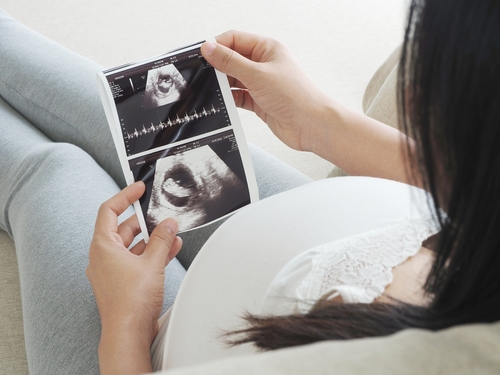Sound, Light Stimulation in Ultrasounds May Help Diagnose PWS in Utero, Study Suggests
Written by |

Analysis of facial movements in response to light and sound stimulation during ultrasound scans may help diagnose Prader‐Willi syndrome in babies before they are born, a case report suggests.
The study, “Comparing a fetus diagnosed with Prader‐Willi‐syndrome with non‐affected fetuses during light and sound stimulation using 4D ultrasound,” appeared in the journal Acta Paediatrica.
Prader-Willi syndrome is a genetic disorder caused by the loss of function of genes in a particular region of chromosome 15. The disease affect both males and females alike, and patients show an insatiable appetite from early childhood, leading to chronic overeating, obesity, and diabetes.
A diagnosis of Prader-Willi syndrome usually comes in the first months after birth, when children start showing severely reduced muscle tone and strength, and feeding difficulties. However, diagnosing the disease prenatally would permit early care and treatment.
During pregnancy, there are already some manifestations of the disease, including reduced mobility of the fetus, excess of amniotic fluid, intra-uterine growth restriction, and immobile flexed extremities with clenched hands or fists. But these symptoms are not restricted to Prader-Willi syndrome, making a diagnosis difficult.
“It is extremely important to find specific features alerting clinicians to the need for additional genetic testing,” the researchers wrote.
“Not only is recognition of the differently developing fetus is essential, since early diagnosis allows early intervention, it also might help parents to prepare and come to terms with a condition which has been reported to result in elevated parental stress levels,” they added.
To look into this, researchers at Durham University assessed the movement of a fetus with Prader-Willi syndrome and compared it with that of healthy children.
The control group consisted of 23 healthy pregnant women, not on medication with healthy single fetuses, who were evaluated at week 20 with an anomaly 4D ultrasound — a scan that determines if a baby is developing normally with higher accuracy than other exams.
The infant with Prader-Willi syndrome was diagnosed after birth, based on low reactive responses and genetic testing. He was deemed healthy after an anomaly scan at week 20 and was scanned again at 32 weeks.
During the anomaly scans, the fetuses were stimulated with sound and light, which provides valuable early information on neurocognitive functioning and muscle tone.
Analysis of the facial movements during light and sound stimulation showed that the Prader-Willi syndrome fetus had a mean of 0.375 mouth movements per minute, a rate that was significantly lower than the 7.37 and 9.49 movements per minute reported in female and male healthy fetuses.
These findings suggest it is possible to detect behavioral differences in a Prader-Willi syndrome fetus during pregnancy, which could lead to an earlier diagnosis.
“The current study is the first analyzing the behavioral profile of a Prader-Willi syndrome fetus stimulated with sound and light,” the researchers wrote.
“[Sound and light] stimulation could serve as a prenatal test to indicate a differently developing fetus who needs additional attention, and prepare parents for the possible unfavourable outcome of the current pregnancy,” they wrote.
Additional studies are still warranted to further explore the diagnostic potential of sound and light stimulation coupled with ultrasound scans for prenatal diagnosis of this rare genetic disease.





